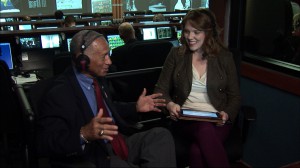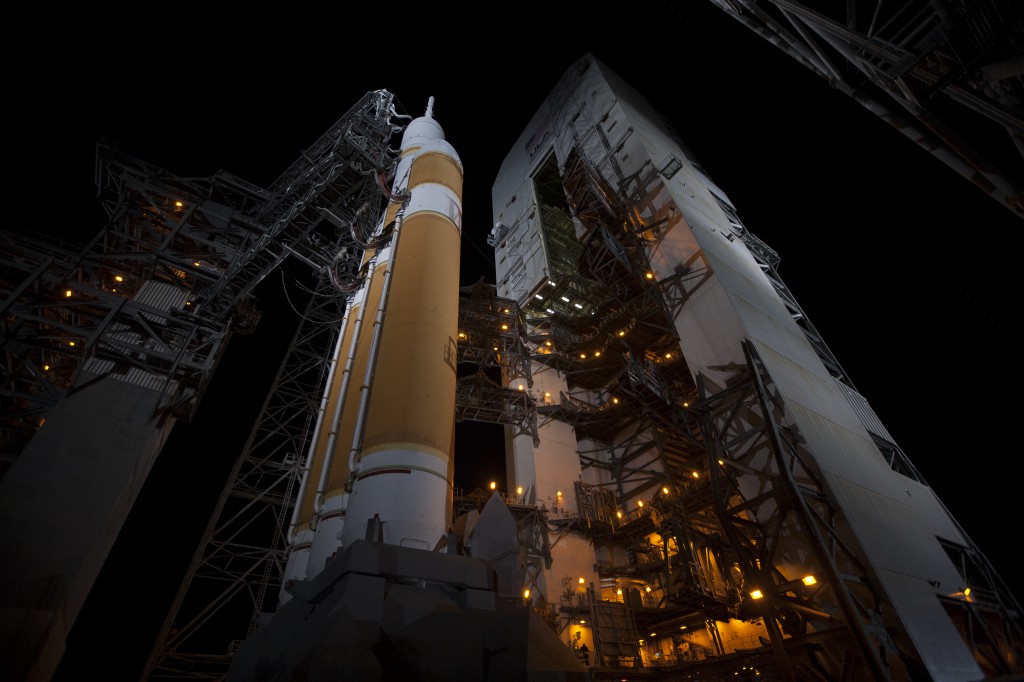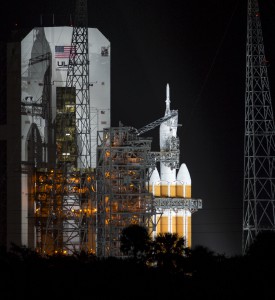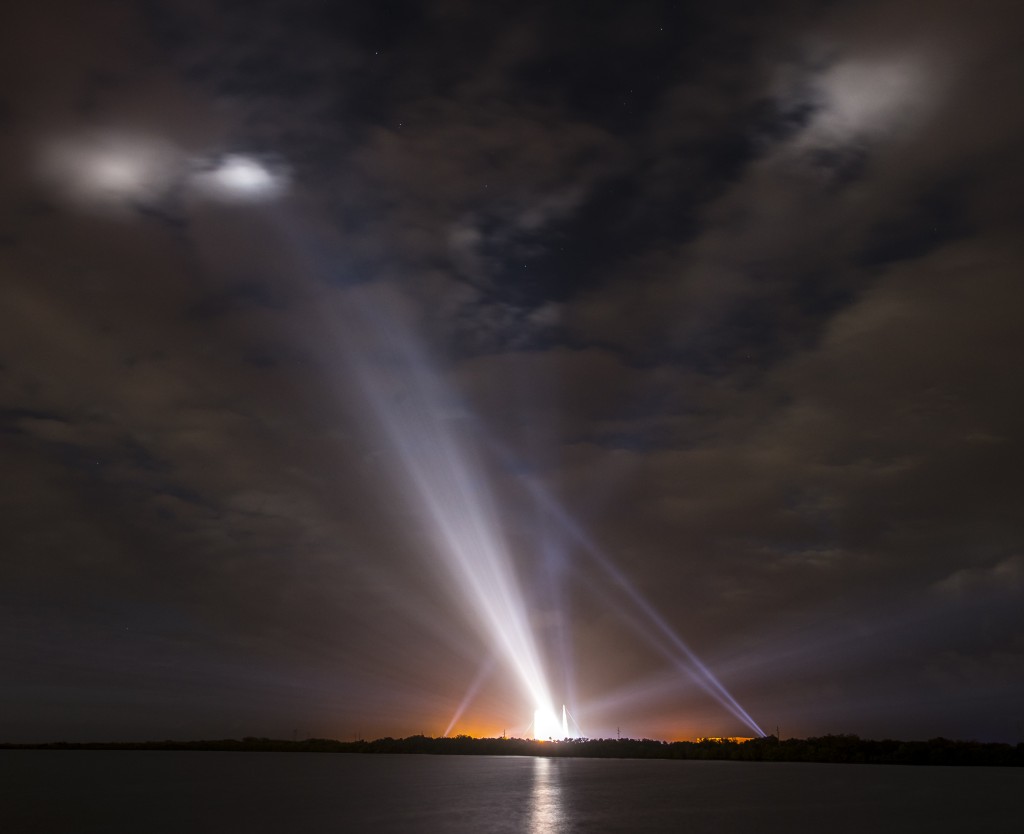 Anyone who has watched coverage of the launch of a robotic or observatory has heard the voice of Steve Agid of the United Launch Alliance. He is the authoritative voice of telemetry who calls speed, distance, altitude and operational conditions as the rocket reports them to the ground. Combined with the expert launch and mission commentary on NASA TV, Agid’s precise data and context help paint a complete launch picture for our audience. We mention all this today because the Orion Flight Test marks the 50th time Agid will be on the mic for a launch.
Anyone who has watched coverage of the launch of a robotic or observatory has heard the voice of Steve Agid of the United Launch Alliance. He is the authoritative voice of telemetry who calls speed, distance, altitude and operational conditions as the rocket reports them to the ground. Combined with the expert launch and mission commentary on NASA TV, Agid’s precise data and context help paint a complete launch picture for our audience. We mention all this today because the Orion Flight Test marks the 50th time Agid will be on the mic for a launch.
Launch Weather Forecast Detailed
Weather Officer Kathy Winters reports that conditions at the launch site are currently green. Wind and clouds in the area are being watched, though. The forecast remains 40 percent chance of acceptable conditions for launch time. The launch team remains on track for a liftoff at 7:05 a.m. EST.
Bolden Voices Promise and Excitement of Orion
 “It’s a big day for me, and exciting day for space and, driving up the causeway, looking at all the cars, I think this is a big day for everyone,” said NASA Administrator Charles Bolden as he followed the progress of today’s countdown for the Orion Flight Test.
“It’s a big day for me, and exciting day for space and, driving up the causeway, looking at all the cars, I think this is a big day for everyone,” said NASA Administrator Charles Bolden as he followed the progress of today’s countdown for the Orion Flight Test.
The new spacecraft is the first designed to take humans beyond low Earth orbit since the Apollo program that sent astronauts to the moon. After completing the test mission, Orion will have one more test flight ahead of it in 2018 before it begins to carry astronauts on missions to deep space.
Space Launch Complex 37 at Cape Canaveral
Swing Arms
As you may have noticed, there are three mechanical arms reaching from the fixed umbilical tower to the Delta IV Heavy rocket and Orion spacecraft at the pad. The arms hold a series of lines and cables that are connected to the rocket during the countdown.
For Orion, the lines provide power and atmosphere control for the spacecraft inside the fairing. The arms connecting to the rocket hold lines that perform a number of functions including carrying gaseous hydrogen fuel away from the rocket. These devices would obviously be close to the rocket as it lifts off, so at the last moments of the countdown, they will revolve away from the Orion and Delta IV Heavy as they begin their climb toward space. That movement is what gives the mechanisms their name: swing arms.
Welcome Back to Cape Canaveral!

Good morning everyone and hello again from Cape Canaveral Air Force Station in Florida where we have set the stage anew for a liftoff of the Orion spacecraft on its first flight test!
Our launch window opens at 7:05 a.m. EST and that is the time the launch team is aiming for today. The liftoff can take place anytime up to 9:44 a.m. if the launch team needs the time to wait for acceptable weather or take care of any technical issues.
The weather conditions deteriorated somewhat since yesterday and forecasters have trained their sights on a rain system coming up from the south. The official forecast calls for a 40 percent chance of acceptable conditions today.
Controllers also continue to monitor the fill-and-drain valves on the Delta IV Heavy following problems that developed late in the countdown Thursday. The team evaluated the valve conditions throughout the past 24 hours and came up with alternate techniques for the devices that seal the fuel tanks in the moments before liftoff.
So there is a lot going on here but the excitement of the first flight test of a new spacecraft designed for humans remains very high. Orion, designed for missions beyond low Earth orbit carrying astronauts, is secure atop the Delta IV Heavy and all of its systems are in good shape this morning. Over in the Pacific Ocean, just off the Baja California coast, the recovery forces are standing by to pull Orion from the ocean at the end of its 4.5-hour flight test.
Delta IV Heavy Fully Fueled
All the propellant tanks on the Delta IV Heavy’s core boosters and second stage are fully loaded for launch. Pumps are topping off the oxygen and hydrogen tanks and the countdown is proceeding toward a 7:05 a.m. EST liftoff, the opening of a 2-hour, 39-minute window that extends to 9:44 a.m. EST.
A Look at Orion/Delta IV-Heavy This Morning
Weather Green, Core Boosters Fueled
The weather conditions have cleared and are now acceptable, reports Weather Officer Kathy Winters. The forecast has not changed, with chance of acceptable conditions remaining at 40 percent for launch time this morning.
Also, the launch team completed fueling the three core boosters of the Delta IV Heavy and pumps are now in trickle mode meaning they will top off the tanks as the countdown moves ahead and a small amount of the cryogenic propellants boil off.
Weather Conditions No-Go, Expected to Clear
Current weather conditions at Cape Canaveral are observed red because of cumulus clouds and precipitation over the launch site. The good news is that both of those violations are expected to clear in about an hour, said Kathy Winters, weather officer for the Air Force’s 45th Weather Squadron.


